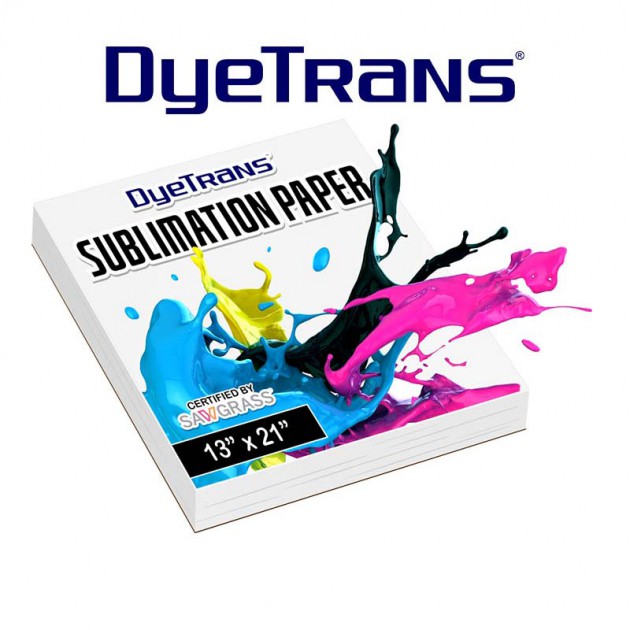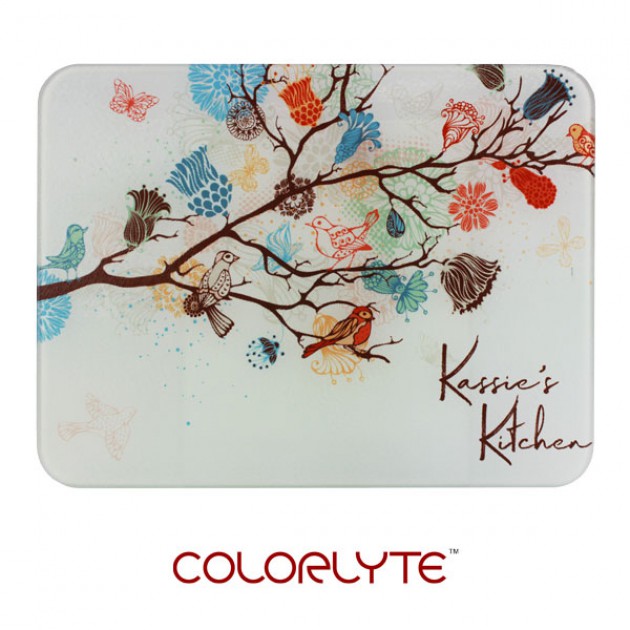Everything You Ever Wanted to Know About Sublimation Paper - Explained in 10 Minutes!

What is sublimation paper and why is it important?
by Jeff Butler · Senior Strategist
A common question for those just getting into sublimation printing is "can I use regular copy paper for sublimation transfers?" The answer is no - sublimation paper is specially formulated for sublimation transfers and this formula is essential in getting the best possible output in the sublimation process.
Sublimation is the process of going from a solid to a gas, while skipping the liquid phase. Sublimation paper holds the sublimation ink in it's solid phase, awaiting release onto your blank substrate - and that's a very important job.
Let's take a deep-dive into the mechanics of sublimation paper.
What does sublimation paper do?
Think of sublimation paper as a 'carrier' of sublimation ink. It holds the ink in place so you can carry it to the heat press and mate it with the blank substrate. It sounds simple enough, however there are different papers that are developed for different substrates - namely soft substrates and hard substrates. Whereas a ceramic mug is a hard substrate, a t-shirt is a soft substrate.
Which paper you choose is an important step in sublimating a quality product. If too little ink is transferred your products will look faded and dull - while other products can have a problem with ink “blow out” and look hazy if too much ink is applied. Sublimation paper is a special type of paper with a proprietary coating added so it can hold the dye sublimation ink. The coating is made of silica and binder and that’s why it transfers colors vibrantly onto substrates such as performance apparel or ceramic mugs.
Which sublimation paper do I use for what substrates?
DyeTrans Multi Purpose When imprinting hard substrates such as ceramics, plastics, jewelry, metal and porcelain (but not glass), a paper such as the DyeTrans™ Multi Purpose sublimation paper is the right choice. DyeTrans™ Multi Purpose is a general sublimation paper that will work for most any substrate. Recommendation: Hard and soft substrates.
TexPrint DT Light Beaver TexPrint Desktop Light All-Purpose High-Release Sublimation Paper - Suitable for all substrates. Required for glass cutting boards, clocks and coasters. TexPrint Desktop Light is a special purpose dye sublimation paper that maintains the premium definition and color fidelity that the TexPrint family of sublimation papers is renowned for. There is no need to use different papers and profiles for different applications. Recommendation: Hard and soft substrates.
TexPrint DT Heavy desktop sublimation paper replaces TexPrint-R and was designed for Ricoh® and Sawgrass printers. The coating on Texprint DT Heavy is designed to work well with Ricoh and Virtuoso gel-resin ink systems and is great for hard and soft surfaces. This is a thick paper, allowing for high ink saturation without any issues and has excellent dimensional stability at high speeds and heavy ink loads. Exceptional resistance to smudging and offsetting. Directional out-gassing. Very high color transfer efficiency. Recommendation: Hard substrates.
Neenah Coldenhove Jetcol DHS sublimation paper is a new high performance paper includes coating that keeps the ink on the surface of the paper, which leads to ink savings and reduced transfer time. JETCOL® DHS allows for more clear, impressive quality This market can be divided into both the desktop market for personalized consumables like mugs, tiles, and phone covers; and a separate market for industrial applications like aluminum ChromaLuxe panels. Recommendation: Hard and soft substrates.
Which sublimation paper do I use for glass substrates?

For glass substrates we recommend TexPrint DT Light, In fact, we feel it's necessary for glass such as cutting boards and coasters. Glass items can be tricky and we've done hours of testing to come to this recommendation.
Read: The Ultimate Guide to the Top Sublimation Products You Should Be Selling
Sublimation paper tips and tricks
- Store your sublimation paper in air-tight containers - humidity is the enemy of sublimation paper
- Use pre-cut sublimation paper for substrates when it's available
- Learn the front and back of your papers - bright side is the front or 'print' side
- Make mental notes of the completeness of your transfers after pressing. The less ink that remains on a used transfer means the more ink that was transferred into the substrate.
- Document your successes and failures with each paper you use for future reference
It is important to note that you will not get desirable results using standard copy paper for sublimation transfers.
So there you have it! When it comes to sublimation papers you have options and hopefully I've given you the information you need to make the best choice for your business. Sublimation paper is a huge part of the process and once you find a paper that works for you, stick with it. Document the success and failures you experience and keep handy for future reference. Keep on pressing!

by Jeff Butler · Senior Strategist
Conde Systems, Inc.
The Ultimate Guide to the Top Sublimation Products You Should Be Selling
The high-speed business of 'print-on-demand' custom printed products is driving customers wild with new and exciting must-haves. This means great returns for your print-on-demand business however, it's important to stay on top of the current trends in the marketplace to ensure you're offering your customers the hottest items that are in demand.
Check out our guide below:
The Ultimate Guide to the Top Sublimation Products You Should Be Selling
